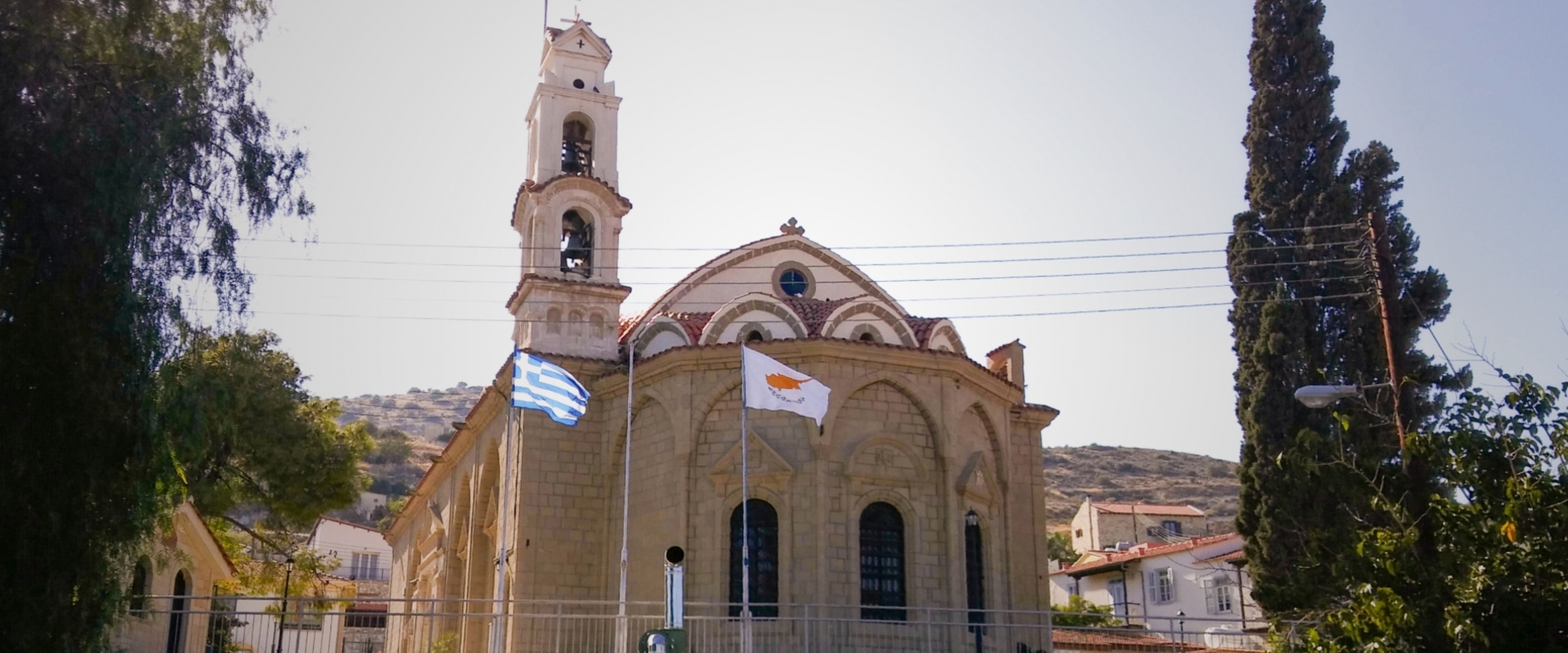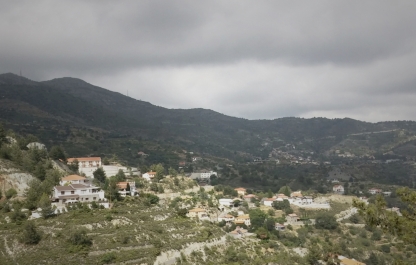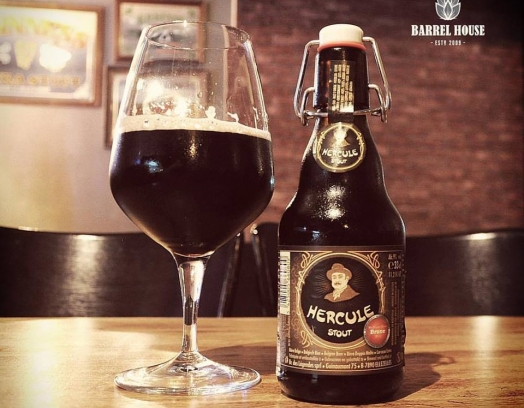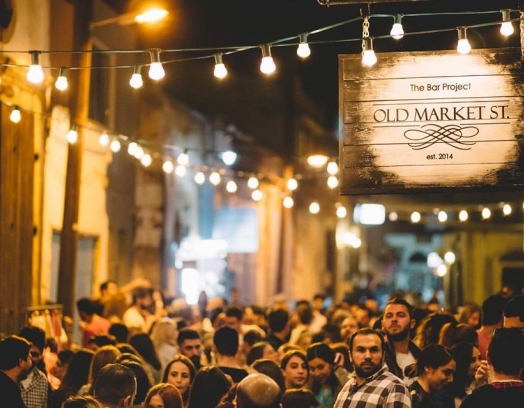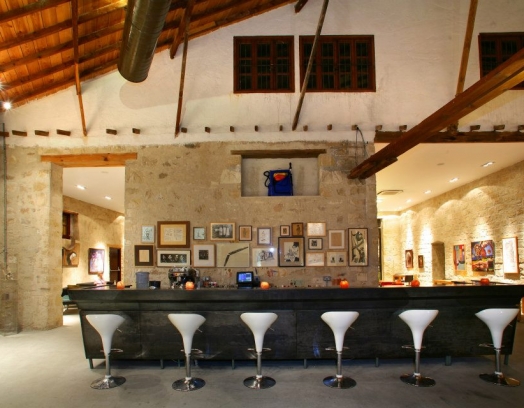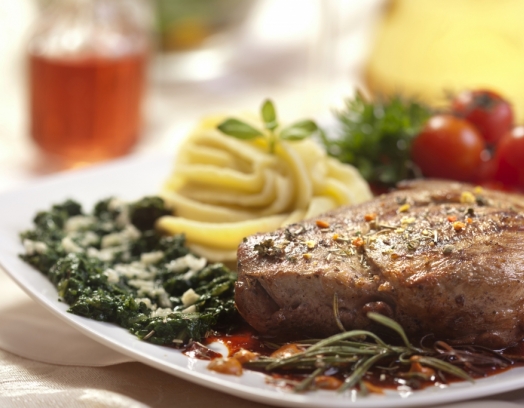I think after you have “in absentia” visited this village today through our eyes, you’ll definitely want to come here and see it for yourself.
Kalavasos — a neighbour to our “acquaintance” Psematismenos — has survived through a lot of events in the past. On more than one occasion, it even saved its people and their homes from death and pillaging. All this was thanks to its unique location: as Kalavasos is so cunningly surrounded by hills, not even the most experienced of pirates, who were a great “head ache” for Cypriots over the centuries, were able to track down a path to it.
They were partial to a piece of Kalavasos, as it possessed both copper and gold-bearing ores!
For a long time, as the local elders recall, both communities — Orthodox and Muslim — not only resided together in peace but as one family. They would help each other in difficult times and even celebrate religious holidays together. The echo of those interrelations can still be heard today, when the ancestors of former villagers, who now live in the part of Cyprus occupied by Turkey, come to Kalavasos.
We saw Kalavasos as open and peaceful, with love for its history and the region, one which is eagerly shared with guests to the village. Today, we’re going to tell you about the village’s splendours, its history and people.
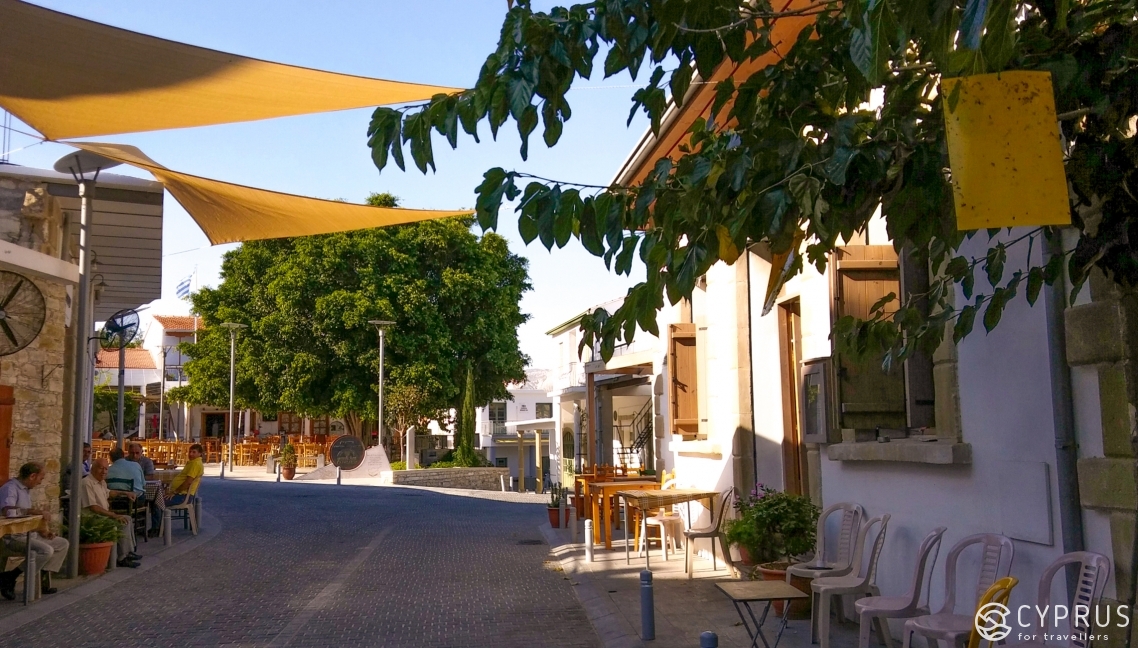
Kalavasos village is situated roughly 40 kilometres to the south-west of Larnaca, on the western bank of the Vasilikos River, at an altitude of approximately 80 metres above sea level.
It’s actually the “ideal” traditional village, recommended for agro-tourists (we’ll come back to them) and generally anybody seeking to enjoy a leisurely, serene holiday in Cyprus.
Also, the location itself — roughly halfway between Larnaca and Limassol, as well as the nearby Mediterranean Sea, longed-for by summer holidaymakers — adds even more advantages to this spot, wouldn’t you agree?
The inherent atmosphere of tranquillity is disconcerting in how it suddenly envelops you, allowing you to savour the delights and nuances of a traditional lifestyle, typical for many generations of Cypriots. It also allows you to enjoy the experiences of “meeting” earlier eras: for instance, when visiting the archaeological remains in Tents and Khirokitia, amongst others.
The Region’s History
The name of the village (in Greek it looks like Καλαβασoς; while in Turkish —Kalavason), as it is officially considered, is derived from the ancient Greek word “vasa”, which roughly meant: “valley covered with forest”.
People have settled in these parts since time immemorial, as well as along the entire coast of Cyprus: we can observe traces of them in numerous archaeological remains. The presence of the Vasilikos River, whose water generously irrigated fields and gardens, has been of great importance in all ages. Another exciting story — along with how it obtained its “common name” meaning “royal” — is linked to the river. It concerns the memorable arrival of a ship to the surrounding shores, from which the Empress St. Helen and her son, Emperor Constantine (St. Constantine), disembarked onto the land of Cyprus, having returned from Palestine with newly-acquired sacred objects of worship.
Interestingly, the current settlement, in fact, appeared in the medieval period. According to historical documents and maps from that period, compiled by foreigners on the island, Kalavasos had almost the same name as today: Calavaso or Calavato.
At that time and in subsequent eras, the settlement was situated on a rich deposit of minerals, especially copper ore. Thus, Kalavasos actively began to be populated and developed. It also started to attract more and more attention in terms of industrial development: widespread mining and extraction of metals began.
-
In the final quarter of the 16th century, these parts were home to a mixed population: Greeks and Turkish-Cypriots (until the sad events of 1967). By 1973, the village consisted of only Greeks (752 people).
Also, since long ago, the vicinity of Kalavasos has been inhabited by representatives from other nations traditionally populating the island. In subsequent years, the number of locals gradually continued to decrease (by the 1980s, a mere 655 people were living there). Several years ago, according to official sources, 730 people at most were residing in Kalavasos.
The village mainly grows citrus fruits (oranges, grapefruits, lemons), some other fruit trees and various vegetables, including root types (potatoes, tomatoes and courgette); as well as grains, legumes and gourds. There are also vineyards in the vicinity.
Thanks to the mixed population in past eras, the village has both a main Orthodox Church (devoted to the Virgin Mary) and a mosque. Besides, the village is, by no means, “a relic of yesterday”. It fairs rather well today, confidently developing in the conditions of the modern world.
Contemporary Kalavasos, like its “neighbour” Psematismenos, is a developing community, standing amidst a civilisation with various opportunities and achievements in combination with supported traditions. The village is continuously visited by both local and foreign guests (mainly Germans), who admire the community’s natural beauty and the archaeological sites in the immediate vicinity.
Much of what we have gleaned in advance from guidebooks, tourist blogs and, of course, the Kalavasos website, we’d be better to see with our own eyes.
-
So, we drive into the village: the road here is clustered with low, albeit rather steep hills, the slopes of which are covered with pine trees. Due to this, the illusion is created that we’ve managed to slip unnoticed high into the mountains.
Needless to say, the natural landscape is very picturesque: the winding channel of the Vasilikos River, surrounded by these lofty hills, creates a natural, shaded and cool “alley” along the river. It’s no surprise that the pines and other trees, as well as, of course, the thickets of thyme and other species of rich grass, are all representatives of the local flora, characteristic of the village of Kalavasos.
As for fauna, the untamed world of wildlife is, by and large, represented here by populations of hares and partridges. When in season, they attract a lot of people who wish to try their hand, so to speak, at hunting.
Small, white houses flicker along both sides of the road, and you can immediately notice how the locals treat the landscapes and nature here with such thought and love: everywhere, there are small, albeit well-kempt public gardens [1]. Benches have been set up for you to take a rest and observe the vicinity, as well as modern bike paths laid out directly along the village streets, running upwards and downwards like terraces.
Please note: there are several pedestrian routes and hiking trails, even with pedestrian crossings at the village entrance. Please beware of people appearing near the highway and do not forget to slow down, especially when turning!
We drove along the road which smoothly crossed to the main street of Archbishop Makariou and arrived rather quickly at the village centre. Here you have free choice of the several municipal parking spots lying under a canopy of sprawled-out trees, again with views of the beautiful surroundings, farms and green gardens: growing carob, olives, oranges, etc.
Kalavasos — a relatively small village — has all its social and tourist life, including all amusements, focused at its centre: we can see the main church of Panagia Titiotissa towering on the left side of the main street and opposite two parking spots. At its feet lie two taverns (“Retro” and “Plateia”). If you head further on to the spacious village square known as Platheya to Pavel Neocleous, you will, no doubt, see the local museum dedicated to the region’s history and mining industry. The square — which is named after the famous villager who went missing during the events of 1974, as the memorial plaque states — has four streets branching out from it.
On the other side of the street, you can see a mosque soaring from thickets of bougainvillaea, clearly visible even at a distance due to their brightness. There is also the large village restaurant-tavern “George”, nearby which tourists can usually be found resting at numerous tables. At this time of the day, there was a small group of German cyclists. After completing the regular route, they were having a lively chat while sipping some refreshing drinks, which were glinting like gold in the rays of the post-midday sun.
From here, the stone-paved streets of Kalavasos begin.
Оur first meeting and acquaintance with the locality and its inhabitants took place straight away, when Mr Yakovos Kyriakou, having seen our parking car and taking us as friends of his grandson, decided to come up and get to know us. Soon after, while sitting at the table of the “Retro” tavern [2], treating ourselves to fine Cypriot coffee and frappes, we got to chatting and learned a lot of fascinating things about the local area.
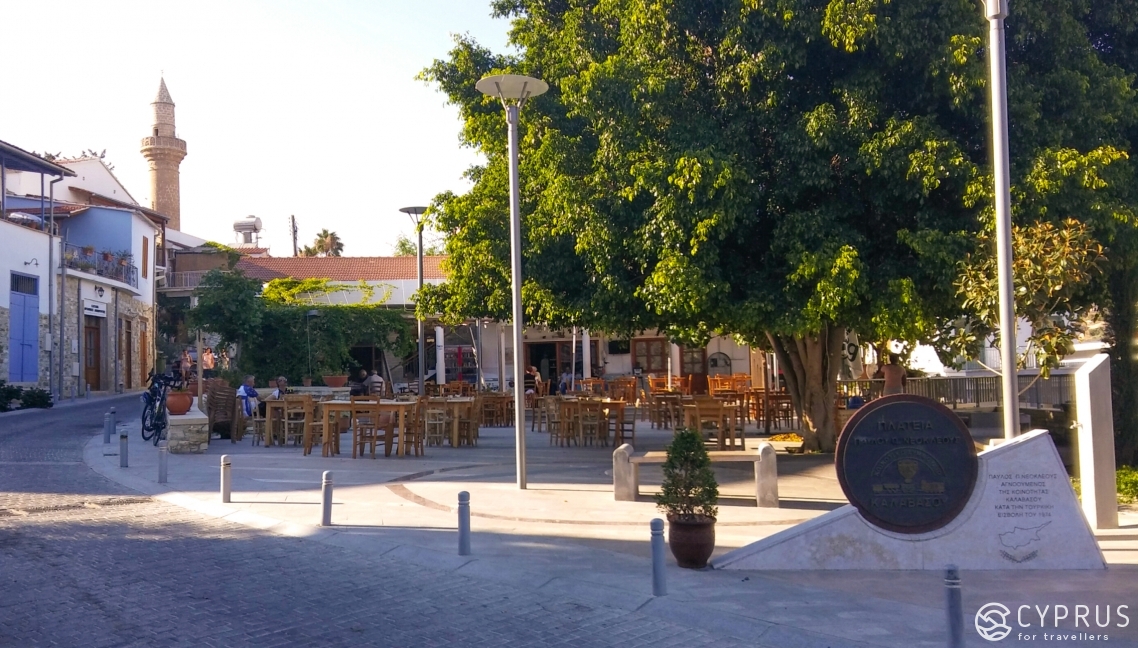
Mr Kyriakou tells us:
Before retirement, I was a mechanical engineer working at The Electric Authority of Cyprus. Overall, I’ve been involved in several military operations on the island: in my youth, I was part of the EOKA struggle for Cypriot independence, and later in the events of 1968 and 1974. So, you could say I’ve witnessed my fair share.
The locals have their own theory about the name of the village: the old word “vasa” actually means “place” (they also say: “basa”), while “kala”. Means good, or, in the given context — reliable, safe. Thus, it turns out that Kalavasos justified its old name: after all, not only in the past and through all the conquests of Cyprus, but also during the Second World War, nobody has ever been able to find us here amongst the hills — not for love or money!
That being said, for the last few years, tourists have been stopping to live amongst us very often: in fact, you now see a lot of Germans especially!
There used to be a village club in our museum, where community meetings and even lectures are still held today. It previously belonged to a family of Turkish-Cypriots whom I’m going to speak about in more detail, as this place is unique to us.
The population of Kalavasos was generally always mixed, and we lived together harmoniously, like neighbours. Fellow villagers of another faith would always be invited to celebrate together on religious holidays — and these were common. We Christians dined our fellow Muslim villagers with flaounes and other foods prepared for Easter. They, in turn, would also invite us to feast on the days of their religious holidays. Can you imagine?
At that time, we were genuine brothers.
Where did this come from? I can’t say for certain, but there’s actually a fascinating story linked with this tradition: the finding of an icon of Panagia in the very house, as you can see, where our museum resides today. They say that a local Turk unexpectedly found it. Soon after, filled with respect and reverence for the sacred object, he even used his own funds to build the church of Panagia — the one you see today.
Nowadays, you’ll also be able to visit the mosque of Kalavasos: it had to be closed recently so that inquisitive tourists, eager for new experiences, weren’t able to pile into the minaret at any moment they pleased… it’s easy to see that worshippers didn’t like this. Its doors open only on festival days, when pilgrims from the “northern” territories come to us. On these days, the church can be inspected from inside, but as tradition dictates, footwear is left outside.
At present, 800 people live permanently in our village. Many work at the power station in Vasiliko — others in Limassol. But our region? No, there is almost no work here for young people, except in the tourism sector, that is, agritourism.
We’re now talking, and you can see that the streets are half-deserted. Watch what happens here in the evening: all the cafes and restaurants, the streets and the whole square, will be filled with tourists on holiday! It will also be much cooler.
Many of us rent housing: and, you know, there is always demand!
-
After saying goodbye to the generous and very interesting MrKyriakou, we went up to the church of Panagia. On the square adjacent to it, there is also a so-called Spiritual Centre (Πνευματικό Κέντρο, similar sites are often found in the ancient churches of many villages).
Churches
The central church of the village, dedicated to PanagiaTitiotissa (also Panagia Theotokos), was built, as is customary, in the very centre of Kalavasos, as though rising above the village, its gardens and fields. The church is surrounded by traditional houses drowning in greenery and circled with flower beds. Its name “Titiotissa” originates from the former, initial name of the Vasilikos River — Tetios.
The church is rather spacious (designed for 300 parishioners). Construction was completed on the 22nd of November 1892 using stone from local rock mined in the neighbouring village of Tochni. The church courtyard, or, more accurately, the surrounding area, is large, green-filled and paved with slabs. It offers vistas of the surrounding hills, the lower and upper quarters of the village. A tall, white-stone bell tower is located on the eastern side of the church by a faceted apse.

Inside this church, you will see a carved wooden iconostasis of exceptional craftsmanship. The holy icons of the church are also ancient, but in excellent condition having undergone restoration. Above the main, first tier of the iconostasis, is another row of miniature icons depicting the 12 apostles and other saints. Above the third section, again with miniatures, you can see the crucifixion of Christ. The iconostasis has three gates: the central (royal), as well as the northern (right) and southern (left) gates — they are also “diaconal”.
A church feast in honour of the Virgin Mother is celebrated on the 25th of March. According to locals, the festivities take place both on the village’s central square and inside the church walls.
A fair is also held on the main square, at which many local producers trade traditional food products and other locally produced goods.
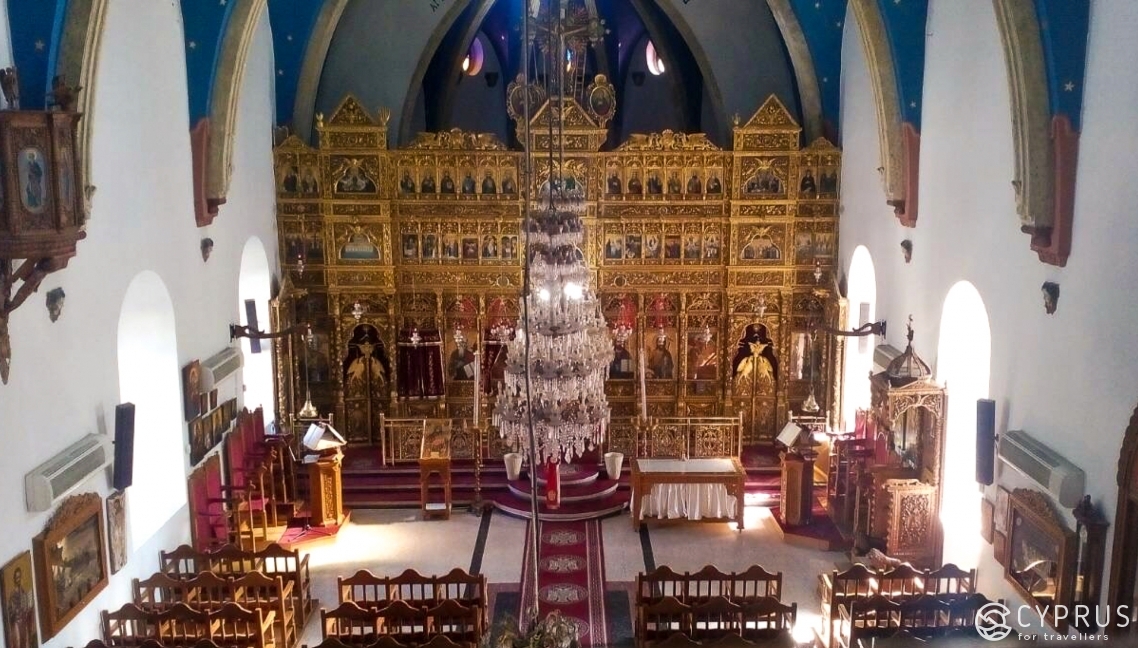
There are several chapels and other churches in and around Kalavasos. Inspecting the local church architecture includes a visit to the chapels of the Archangel Michael, Agios Georgios, Agios Niktarios, Zoodochos Pigi (or Life-giving Source) and PanagiaLampoforus. Don’t forget about the ancient mosque.
Mosque
The mosque is the meeting house of an old building dating back to the late 19th century. It is easy to see, located not far from the main square of the village, on the church square by Panagia. Naturally, it was abandoned entirely in 1967. The locals who professed Islam at that time were forced to leave the village and move to neighbouring Mari. Very recently, as reported on the village’s website, the mosque was restored with the contribution of funds from Turkish-Cypriots.
We head up towards it to take a closer look: from the central square of Kalavasos, you need to choose the street heading straight on and a little to the left — this is a continuation of the previous Archbishop Makarios III Street. From this point, you have your reference point: a luxurious, lilac-purple bougainvillaea. Take a sharp dive into the Archangel alley (an ode to the Archangel) and, following that direction, head back a little and then upwards, between the houses and through a picturesque, shaded tunnel of plants.
On the left, a little higher, you will find the gate to the mosque courtyard and see a tall, snow-white minaret decorated with carved white stone along the cornice.
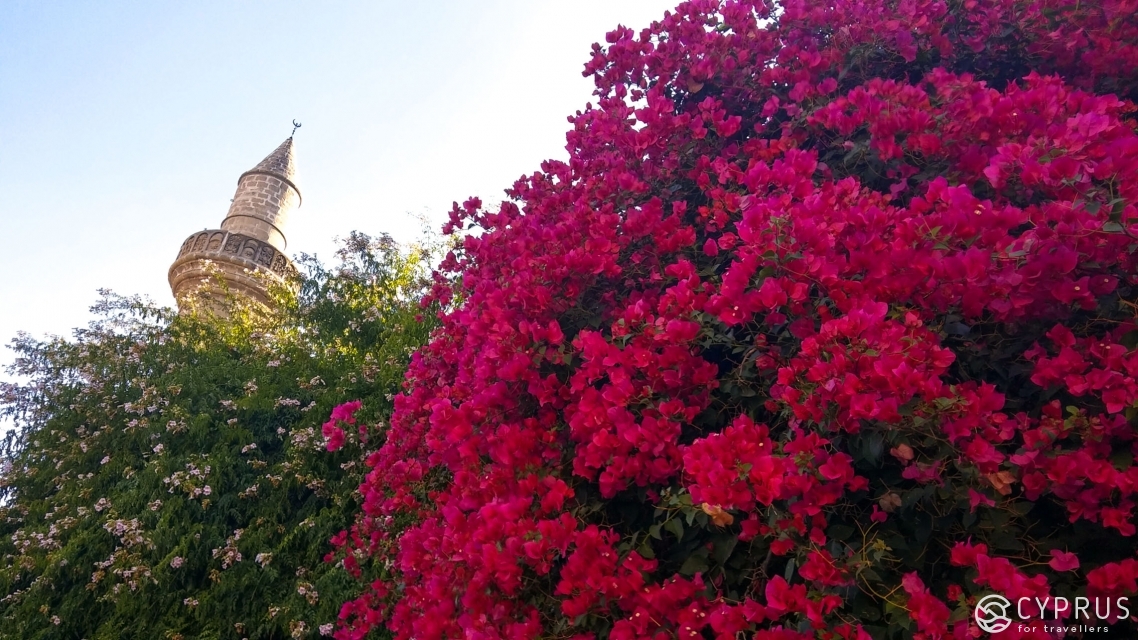
When choosing your own route for walking through the village, pay attention to its architecture: primarily, the one- or two-storey houses under tiled roofs. You can make out their whitewashed walls, obligatory neat balconies and terraces, thickly lined with flower pots or entangled with vines of grapes and jasmine.
A good few amongst them are actually very old, and many are available to live in today, such as the Kontoyiannis House (built in 1850).
For those wishing to come and stay here one day, please call (+357) 24584131.
Please note: the wall of a typical house, also near the square, is decorated with graffiti, featuring a local artist's autograph.
Local Architecture and Two more Unexpected Meetings ...
We walked along the “upper” tier of village streets which abruptly disappear having reached the orchards and vineyards closing in from the hills. There, we managed to make our ascent unnoticed, scaling up the steps leading from the mosque. We then headed down again, along another path, to the central part of Kalavasos and immediately discovered a local art gallery (Mavrovouniou St., 100) — also the residence of Michalis Mozoras, a famous composer (traditional and laiko music), guitarist and applied artist in Cyprus.
The owner warmly invites us to look around his garden, filled with a great variety of his creative works: sculptures and mobiles, ceramic work and a diverse collection of stones and minerals, pendants and other jewellery, as well as items of decor.
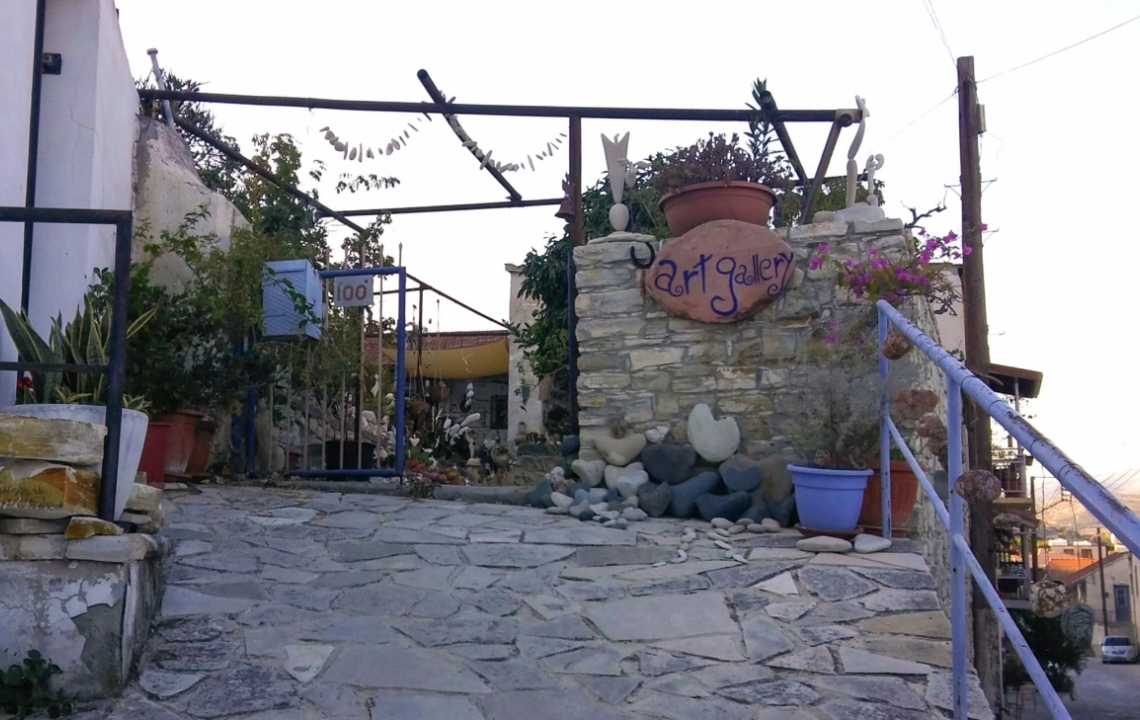
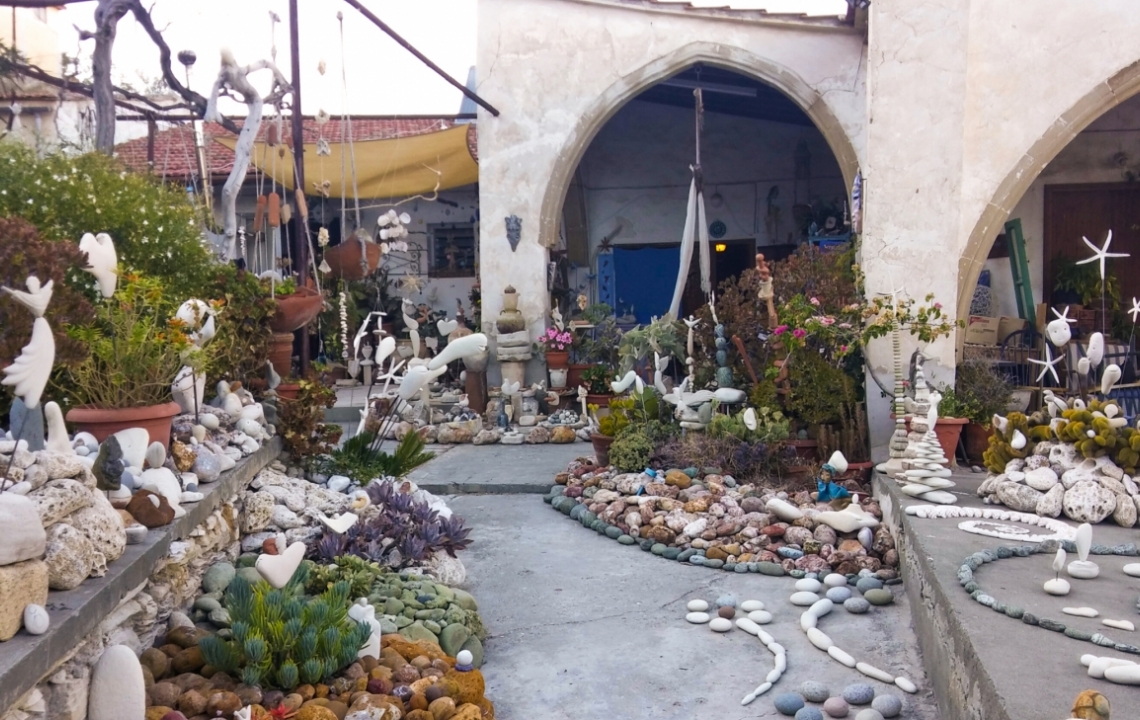


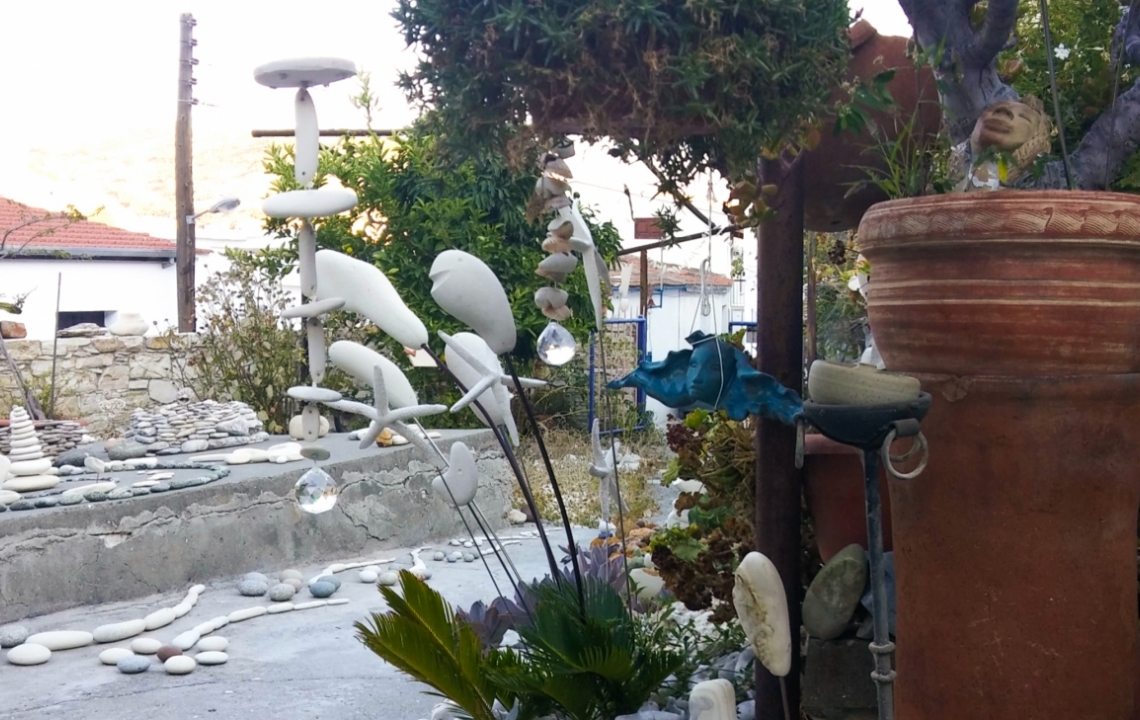

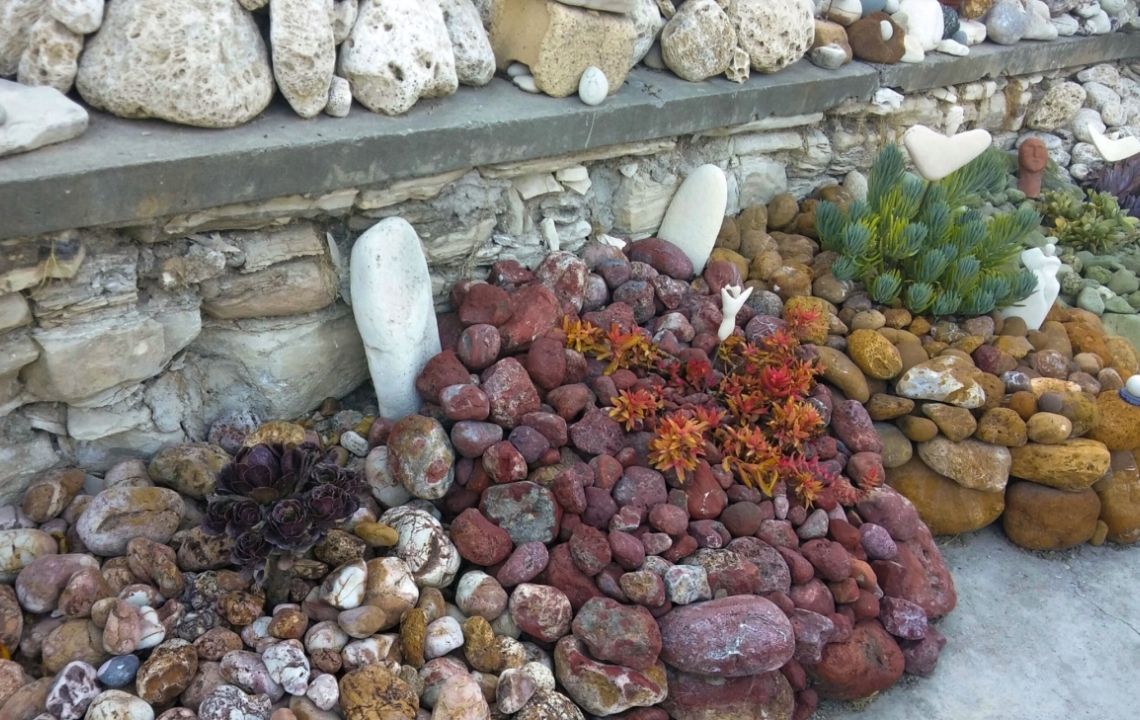
He also courteously lead us to his house.
With literal trepidation, the musician showed us several old trinkets and musical instruments: one of them was his father's bouzouki.
Such an unplanned and rather unexpected meeting with MrMozoras was all the more pleasant because we already knew each other thanks to Facebook and his current creative activity concerning tours and performances in many cities and villages on the island. Some of them have been widely covered in the local press, with videos available on YouTube and recordings on radio broadcasts.
Yes, the atmosphere of the old house, with arched ceilings and a large fruit garden, somewhat wild from its longevity, impresses with a combination of tradition and creative flair. The favoured materials that Michalis now works with are natural stone, ceramics and their combinations with metal, wood and glass. He told us that he has been practising applied art for 20 years, combining these activities with music.
His work, with a slight touch of abstractness and stylisation, is characterised by romanticism, but the main leitmotif is mother and child. There are also images inspired by world literature (The Little Prince) and history, and most importantly, island culture. You can see a sculptural, stylised female figure resembling the famous Koukoumara (you can read about traditional ceramics and its forms here), symbolic figures of doves and so on.
If you ever come here, all the works you see can be purchased from the author.
Contacts: Facebook page, phone (better to arrange a visit in advance): (+357) 99 333 085.
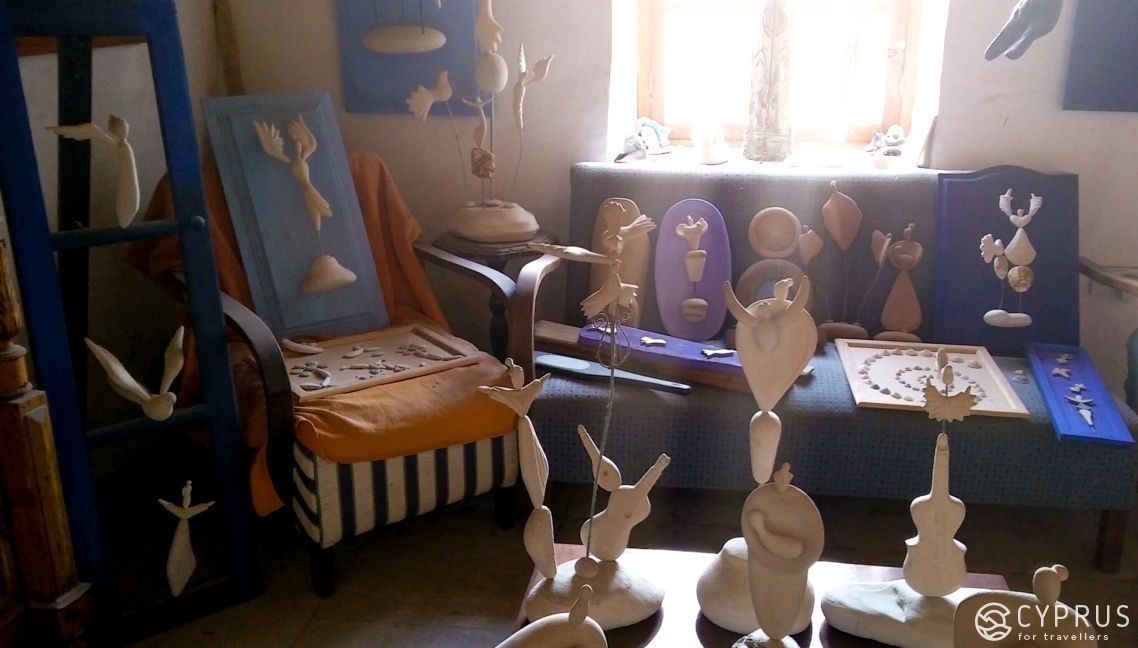
Meanwhile, the evening was descending, and it was getting dark... and as we were near completion of our stroll around the village, we had the pleasure of meeting the mayor of Kalavasos, Mr Lefteris Foka.
We discussed the topic of local holidays. As it turned out, various events [3] and festivals are held in Kalavasos, such as the one which took place relatively recently, on the 19th of November 2018. It was a big festival centredaround olives and olive products (oil and cosmetics), even leaves (and this is already liquor!).
Residents and guests to the village also weren’t resigned to monotony in the summer months, as musical evenings are put on here annually (in mid-August), assisted by and under the auspices of the Public Council. Besides, the Tenta cultural festival has been held here for three years.
As for Kalavasos on weekdays, it is worth mentioning that projects were recently implemented to modernise, restore and preserve the village’s historical appearance. The Museum was established, collections of which were replenished with exhibits issued for temporary storage from the Archaeological Museum depository. Also, the square and village streets were paved with stone using traditional techniques; the stadium lighting was improved; signs with house numbers and street names were placed everywhere if they were absent in places, and so on.
The public and authorities have plans for the development of a cultural centre in the old Turkish school building, innovation in the sphere of irrigating the village lands and so on.
Every Spring, for the past several years, a local motor-race has been held in the village —Ετήσια Διαδρομή Αγάπης or “The Annual Love Route” — with the participation of a group of bikers.
Let’s not forget, of course, about the opportunities for an active holiday all year round, or “agrotourism”, a phrase already known to many. For those who’d like to know more about agrotourism, here is the following:
Agrotourism
The phenomenon of agro-tourism grants both Cypriots and foreign tourists the opportunity to spend their holiday in nature’s embrace, surrounded by an authentic rural setting and the lifestyle of the locals, enveloped in time, so to speak. It enables them to learn more about the culture of the Cypriot people, about the country’s customs and holidays, its cuisine and folklore as a whole.
Since 1992, the Cyprus Tourist Organisation (CTO) has been leading a programme for this stylish and successfully developing form of tourism. Based on its concept, programme participants may be residents of hamlets, wishing to turn not only their own traditional homes but also entire streets into tourist spots. Here, traditional restaurants or souvenir shops will be opened, and cultural centres will appear. The main requirement is that to be successfully included in the traditional atmosphere of the local community, all declared “sites” must have a natural, historical character.
In the aim of bringing the given policy to light and developing agro-tourism, CTO is attracting the cooperation of other institutes and organisations, for instance, the Departments of Antiquities, Town Planning and Housing Construction, as well as the Ministry of Agriculture, Natural Resources and the Environment. Agro-tourism has also witnessed contributions from various local cultural associations, architects, tourist agencies, and so on.
Anyone who wishes can get involved in this simple life, at least for a little while, and try their hand at helping the local farmers in the fields and gardens etc. In accompaniment, guests are offered comfortable living conditions and all the blessings of civilisation which, nowadays, are no longer alien to Cypriot villages. So, walks, chats with new friends, healthy and tasty food, mastering new skills and a “journey” into the past — this is what you can find when venturing out to Cypriot villages.
Don’t forget that the close proximity to the sea and mountain routes, as well as the opportunity to visit famous monasteries and antique landmarks, will further enrich your holiday on the island. You’ll no doubt want to return here a bunch of times.
In terms of Cypriot agro-tourism, Kalavasos is one of the most well-known and popular ports of call!
So let’s return there…
As the town leader explained to us, the administration of Kalavasos is thinking to soon transfer the museum, with its entire collection of exhibits dedicated to the region’s mines and archaeological antiquities, to a more appropriate building (a neighbouring one, as we learnt). Meanwhile, the old house, which has long been used to host meetings of community members and various assemblies, as we already know, is going to be vacated, and its further fate is currently unknown.
Needless to say, Kalavasos is drawing us in with its modern attractions which are already becoming popular sights.
“Kalavasos” Reservoir
The reservoir is located to the north, north-east of the village, surrounded by scenic hills. When we were in Kalavasos, the water level wasn’t very high: this was telling of its high usage, along with the persistent summer heat, which wasn’t for moving an inch.
The Kalavasos dam, erected on the River Vasilikos, considerably contributes to irrigating the majority of the lands worked in this area. Constructed in 1983-1985, it’s a rather large build, standing at fifty-seven metres in height and two kilometres in length. Its surface envelops 875,000 square metres. The dam, along with the Dipotamos reservoir, is considered the primary source of irrigation for the neighbouring valleys.

The dirt road running nearby the dam will lead you to the remains of an old mining gallery…
Mine Pits and Copper Extraction
The presence of rust and other residue associated with the development of the mining industry, which were found in the Kalavasos region, are proof of remarkable mining activity in ancient times, attributed to the Phoenicians and later the Romans.
The Kalavasos mines are located in a region 6 km to the north-west of the village. The zone surrounding the village, where ore was mined, occupies an area of 18 square kilometres. Its centre, which lies to the north of Kalavasos, has the following coordinates: 10 km from the banks of the Vasilikos and close to 13 km from the remains of ancient Amathus. So, extracted ore underwent initial treatment at the local plant and was then transferred by rail to the neighbouringVasilikosharbour (where it was imported on vessels).
Five copper-ore mines have been opened on the lands of Kalavasos: Platies, Petra, MavriSykia, Lantaria, Mavridia, all of which are the property of The Greek Mining Company (GMC).
In contrast to current data, the volumes of previous mining sites are currently unknown.
In 1927, Kalavasos began to attract the attention of mining corporations, when the Pyrite Mining Company conducted surveys of the area. The research provided data concerning some non-copper-bearing pyrite deposits; though they began to be mined, the deposits proved to be meagre and didn’t warrant further exploitation, resulting in the suspension of work in 1932.
A little later, the Greek mining company again began to examine the Kalavasos region systematically, and so, in 1948, it turned into a large mining centre. Also, it is common knowledge that after Cyprus gained independence in 1960, the company transferred its shares to the local Greek-Cypriot community.
Thus, in those years, our Kalavasoswasn’t just a miner’s village, but a genuine centre for the mining industry, as its ore deposits provided work to a large number of both local residents and to the population from other, close-lying villages. They attracted many qualified mining specialists and scientists, both from Cyprus and other countries. Ore mining in these areas became an essential source of state income, injecting considerable funds and resources into the Cypriot economy.
Although the mines remain closed today, it’d be a far stretch to call them abandoned: the Public council of Kalavasos has plans to conduct restoration works on one of the entrances, allowing visitors to see the stages of ore extraction in the future — as it once happened in the past.
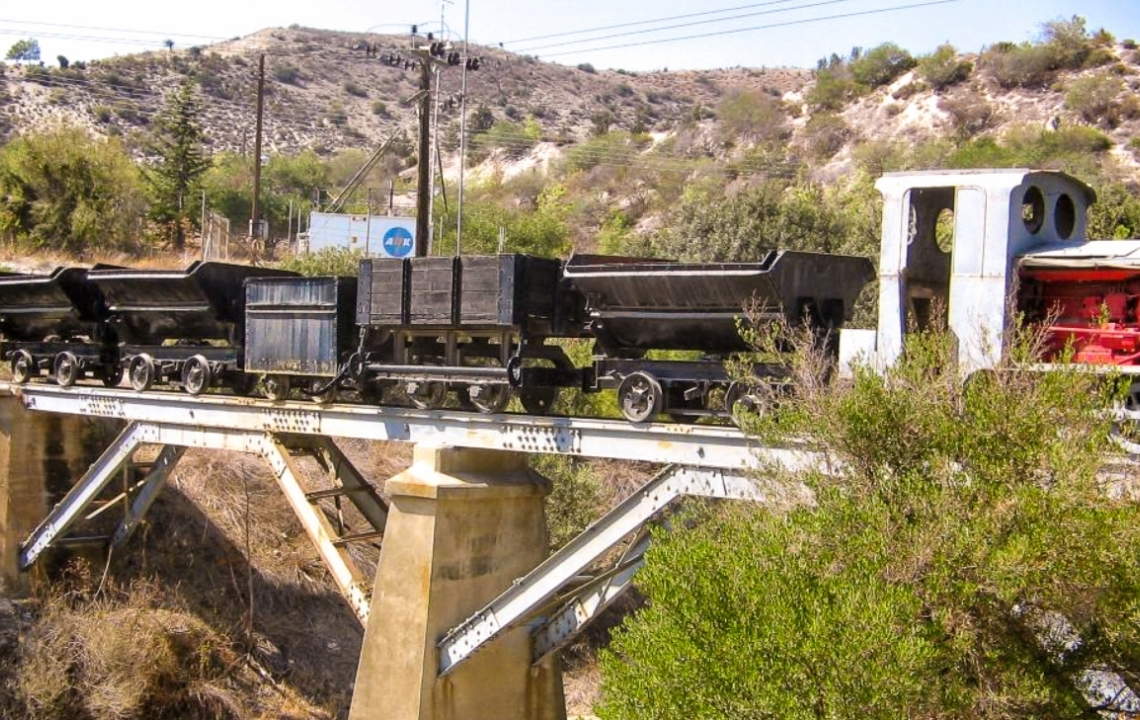
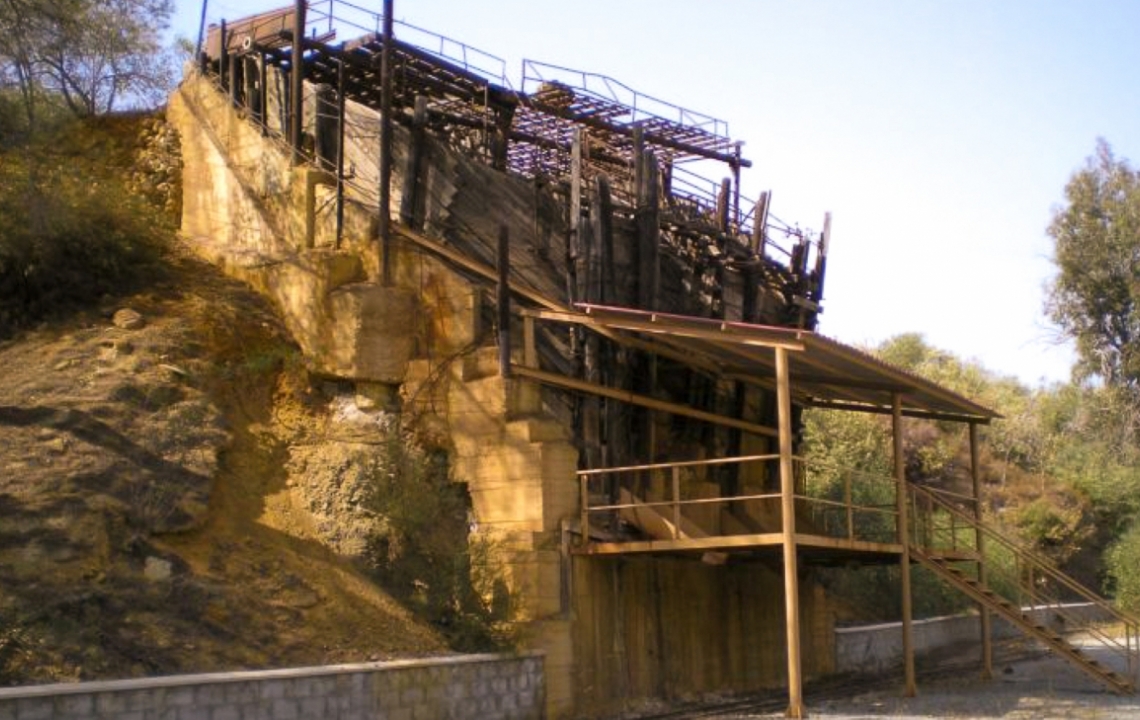
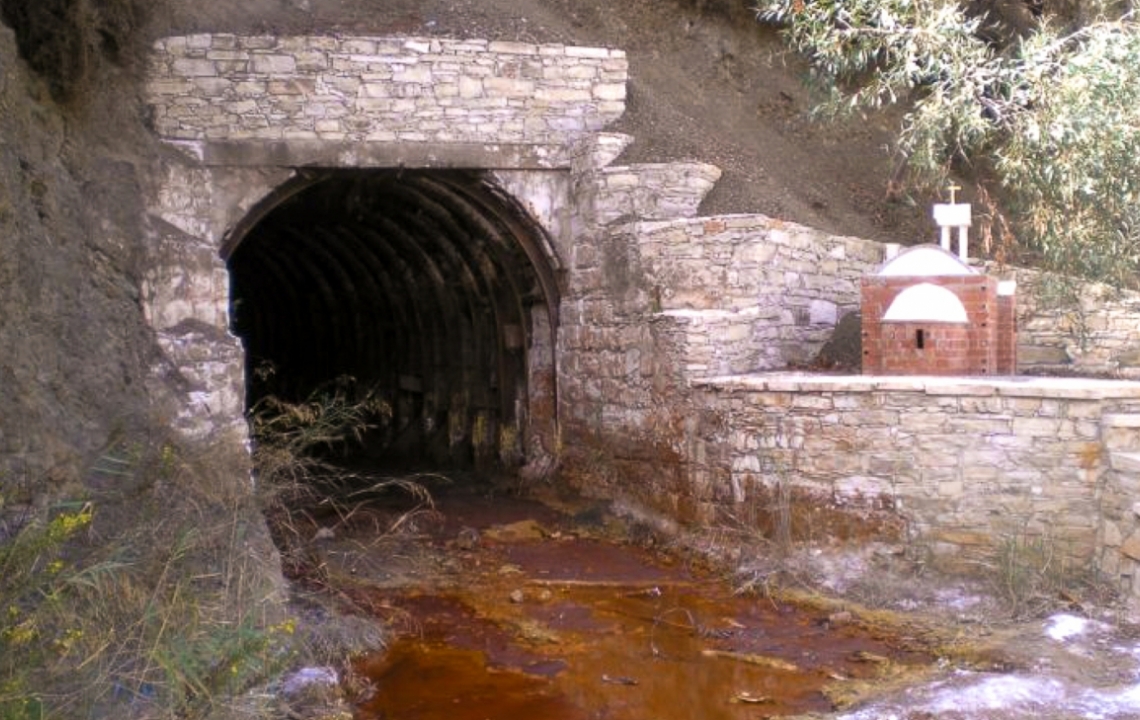
If you’re interested, the research of prof. L Mousoulos confirms that over the past decades, roughly 5.5 tonnes of ore has been extracted from the local mines.
Besides, its composition is noted to have been practically the same everywhere, albeit varying based on the following indicators: from 0.5 to 2% (copper) and 30-40% (sulphur). The years when work was conducted: mainly from 1953 thru 1966, and then in the 1970s. In the 20th century, the earliest exploration in the vicinity of Kalavasosand Asgata stretched back to 1937 (Mavridia mine; it also proved to be the last mine, closed at the finish of work in 1978). The time for the rest followed after.
As for ore exports, according to Mousoulos, the mines of Kalavasos exceeded 3 million tonnes of in that same period.
However, this region isn’t only renowned for its mines, as limestone is extracted here to this day — namely in the location of the “Vasiliko” cement works. The primary extraction of raw materials for cement production in Cyprus is generally conducted here: the limestone quarry has been active since the first years when the cement industry was founded in this region, to the west of Kalavasos.
How to get to Kalavasos and Where to Stay
It’s just as easy as getting to the neighbouring Psematismenos.
From Limassol: head along the Limassol – Nicosia highway (A1), turn off to the left when indicated and onto the B1 (for Psematismenos) or the E106 (for Kalavasos) — around a half-hour journey.
From Nicosia: the same route in theory, only coming from the other direction — no more than 45 minutes.
From Larnaca: take the A5 highway, then follow the signs — 30-35 mins in total.
By Bus (there’s a stop on Archbishop Makariou III street, a meeting spot: the stand by “Plateia” cafe under a large tree): the 404 and 456.
You can actually get to both villages from Larnaca on the 456; if you’ve already stopped somewhere nearby, then the №402 also runs between the neighbouring villages.
For more information, please see here: www.cyprusbybus.com.
Where to Stop
Like in the neighbouring Psematismenos, there is also a developed “private sector” in Kalavasos. See here for more info.
The village also features its own hotel: “The Library Hotel & Wellness Resort”(prices ranging from 80-100 euro on average).
Address: Kalavasos, 3 Aneksartisas Street, +357) 24817071, www.libraryhotelcyprus.com.
Infrastructure
There are several local parking spots, cafeterias and a bike-hire station (on 1 April Street and Aneksartisias Street) located around the central part, which is full of traditional houses for rent. On almost every street, you’ll find mini-markets and food kiosks, as well as Wi-Fi. There is a bank branch, chemist, electronics and souvenir shops.
Traditional, stone-paved alleys are joined here with walking zones and pedestrian paths, creating a genuine tourist village.
Here is the village’s information site: www.kalavasos.org.
As we near the end of our trip to Kalavasos, we decided to call at another fascinating spot on the way home, one which you’ve, no doubt, already heard about on numerous occasions.
Khirokitia: A Museum Out in The Open
It’s straightforward to find: exit Kalavasos onto the highway in the direction of Nicosia, after roughly a couple of kilometres, turn off again at the sign for “Khirokitia, Tochni”. Literally, as you reach the turning for the village of Khirokitia, turn to the right onto a convenient and spacious parking spot, paved with yellow blocks, located behind a road-side tavern.
You have a choice here: either immediately begin your ascent to the summit from the lattice gate, then circle around the high hill along the dirt track (also a nature trail). Or you can head a little further to the shaded trees at the end of the car park and begin acquainting yourself with the gatehouse there. It stands at the entrance to an exhibit out in the open: a restored ancient settlement, where the remains and location of a “mere” 48 buildings have so far been uncovered.
A sign in four languages has been placed near the entrance, reminding “wild” guides, of which there a great many in Cyprus, that: according to article 41 (1)/95 permission to conduct excursions on the site is only granted to specialists licensed by the Cyprus Tourist Organisation of the Republic of Cyprus. Since we weren’t there to assemble a group under our own guidance, let alone join an organised group of tourists, this warning didn’t concernus.
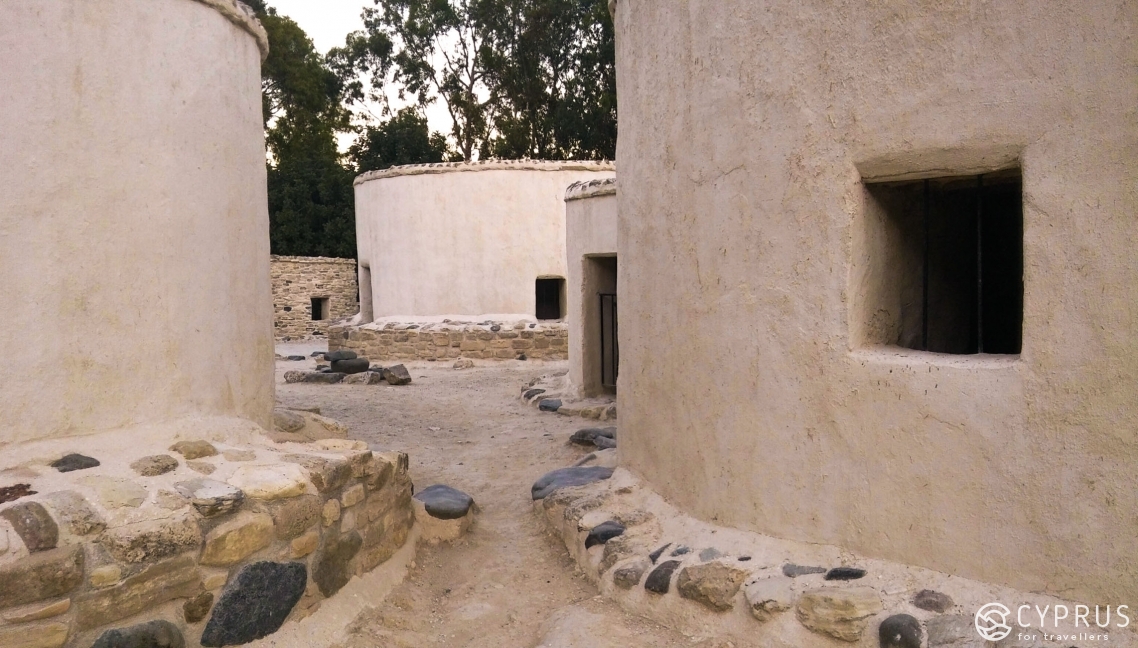
We’re going to tell you what we saw on arrival, and what we left in store for next time, as honestly, our day turned out to be brimming with experiences, events and unexpected discoveries.
After entering the territory of the ancient settlement, you will immediately find explanatory information and a stand featuring an aerial “picture” and plan of the archaeological site (in Greek and English). Thus, after studying the information provided for visitors, it all becomes clear: these Neolithic settlements (7 B.C., like in Tenta) are an accumulation, or, even, an “ensemble”, of rounded buildings (recently restored through traditional techniques, similar to original ones), considered compact in size for our time. For some reason, its settlers once left the settlement for good… for a whole 1,500 years.
Besides, it wasn’t only the people of this settlement which left, as the entire island appeared to be absent of people for a long time. In fact, the mystery of their disappearance remains unsolved to this day.
With the beginning of scientific experiments on the hill, areas of large-scale excavations proved to be somewhat “split” between several expeditions operated here in different decades. Research on one site was carried out from 1936 to 1946 by the Department of Antiquities of Cyprus, under the direct supervision of Dr P Dikeos, the “father” of Cypriot archaeology.
Research on another site was “led” from 1976 to 2009 by the French Archaeological Mission, under the auspices of the Ministry of Foreign Affairs and under the direct supervision of director A Le Brue.
A very convenient and rather gentle sloping trail (the so-called “archaeological” trail) also rises up from this spot, encircled by gardens. When enjoying a stroll along the path, you will soon reach excavations under a canopy and other remnants of ancient life.
In fact, you shouldn’t rule out the possibility of seeing several relics of the local flora nearby along the hill (its height above sea level starts at 100 m and soon already reaches 216 m). But be careful, as it’s the mandrake — a rather poisonous plant, albeit famous since ancient times, according to alchemists’ tractates.

So, if you are a determined sort and don’t see any obstacles in your way, then these are precisely the types of sites you’ll encounter at the excavations:
Head along the nature trail, going anti-clockwise around the hill (if you’re coming from the “settlement” [4] — an enclosed village which had both stone buildings and earthen structures — where the archaeological part also begins). After circling the hill, nearby the Maroni River, you will come out to the remnants of the settlement on the northern hillside.
That said, a walk along the archaeological path may be of more interest: through the first sections of the excavation, further along, and higher up ... aside from the remains of buildings, you will see several fragments of ancient fencing in the west, and then in the north of the settlement.
The site is open for visits every day, from 8:30 to 17:00.
However, this region is generally packed with discoveries. In addition to the Khirokitia settlement, the vicinity of Kalavasos, Psematismenos and other villages located here feature other archaeological sites, which are also worth knowing.
As you likely know, we’ve already once visited the Neolithic excavation site from the pre-Ceramic period in the town of Tenta (dating back roughly to 7000-6000 BC).
You can also encounter “archaeology” in these parts if you visit the following sites:
- Neolithic “Kalavasos A” in Kokkinoi, — dating back to the second ceramic Neolithic period (4500–3800 BC);
- Settlements and remnants of constructions from the Eneolithic period in Aija;
- “Kalavasos B” in Pamboules (3500–2500 BC).
The last two sites are included in the so-called Kalavasos Prehistoric Project. Since 2002, recent excavations have been led with the participation of the British University of East Anglia. The sites were first discovered in the 1940s when research was conducted there by Dr Dikeos (for more information, see here).
Archaeologists are aware that the Vasilikos Valley features sites of ancient necropolises from the Early and Middle Bronze Age, located near to Kalavasos and even surrounded by fragments from one of the residential quarters (dated 2500-1650 BC). The archaeological sites then include the remnants of a settlement from the Late Bronze Age and a necropolis in Agios Dimitrios.
And so, our latest outing “out of town” has ended!
And you, our readers, are invited, as always, to stay with us!
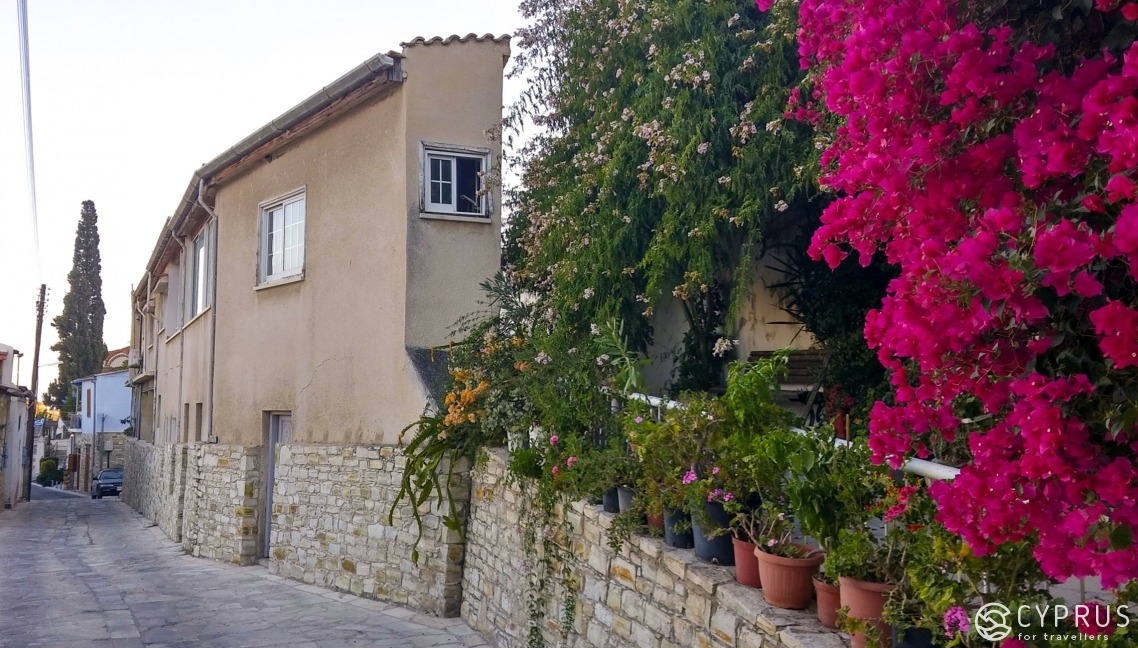
Concluding our account, we would like to express our sincere gratitude to the Mayor of Kalavasos, Mr Lefteris Foka and other residents of this beautiful village — for their hospitality, providing rare archival materials and in general for their all-round assistance in our work.
Good luck and prosperity to you, friends!
Until next time for more discoveries!
[1] And in green parkland, a very rare attraction in Cyprus towers above a stream of water- a railway bridge (and, probably, the only one to have survived from the time of the railway and mining industry in the region). There you will see a small train construct: a mini-locomotive with several trolleys attached, in which ore would have been transported from the mines. This construct is a symbol of Kalavasos, along with a pithos displaying the Kraken from the Minoan era. An impressive object for photo and video shoots, especially in season, when the island rivers are filled with water!
[2] The taverns and cafes of Kalavasos are marked and recommended by Tripadvisor. We can confirm the excellent quality of the drinks; one can assume that the dishes are, by no means, inferior. Prices are perfectly reasonable and no higher than in other tourist places.
[3] Read here and here for how Greek-Cypriots generally celebrate state holidays on the island.
[4] This is a modern reconstruction of the village, with recreated elements of daily life in the homes and villages of the ancient inhabitants who worked the land and bred livestock here.

